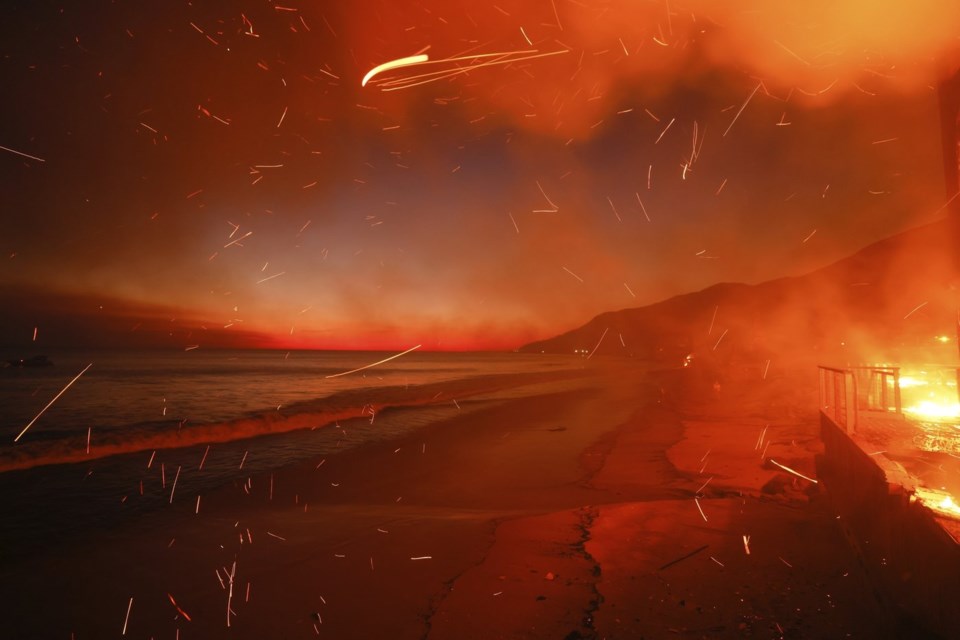High winds have been a key ingredient of the devastating Los Angeles wildfires, and after a brief lull at the end of last week they are forecast to intensify through the middle of this week. That's certain to complicate the fight against blazes that have killed at , incinerated thousands of buildings and are likely to be one of the .
Here's a deeper look at the science behind wind, including what it is, what causes it and how it behaves in the geography around southern California.
What is wind?
It's the movement of air that results from differences in atmospheric pressure across a landscape. The greater the pressure differences, the stronger the winds.
Topography matters, too — treeless mountain peaks are typically windier without those trees, or buildings, to slow the winds. And different parts of Earth — water and land — heat from sunlight at different rates, which shapes wind.
What are Santa Ana winds?
Southern California's winds typically flow onshore from the Pacific, carrying moist air onto land. The are warm currents that move in the opposite direction. They typically occur from September through May, and are so dry that they're linked with some of the worst wildfires the region has ever seen, in part because the lack of humidity in the air contributes to vegetation quickly drying.
How does Southern California’s geography affect wind?
When the wind rushes into southern California from the northeast, as it does during a Santa Ana, it's coming from Nevada and western Utah, over and between the mountains in between. High pressure over those states, combined with a low-pressure system in Mexico, results in air funneling rapidly along those mountain passes or climbing up and over peaks like a roller coaster, picking up speed as it goes.
Where wildfires are burning, those winds contribute to the fires' speed and erratic movement since air pressure is so much more variable in mountainous terrain compared to flat land.
Is climate change affecting winds?
Alex DaSilva, a meteorologist at AccuWeather, said . But he did note that research shows drought conditions will worsen in the future along with climate change, which means increased fire risk from high winds.
Victor Gensini, a Northern Illinois University climate scientist, was more emphatic.
“There is no established link between these types of winds causing wildfires and climate change,” Gensini said in an email.
___
The Associated Press’ climate and environmental coverage receives financial support from multiple private foundations. AP is solely responsible for all content. Find AP’s for working with philanthropies, a list of supporters and funded coverage areas at .
Isabella O'malley, The Associated Press




